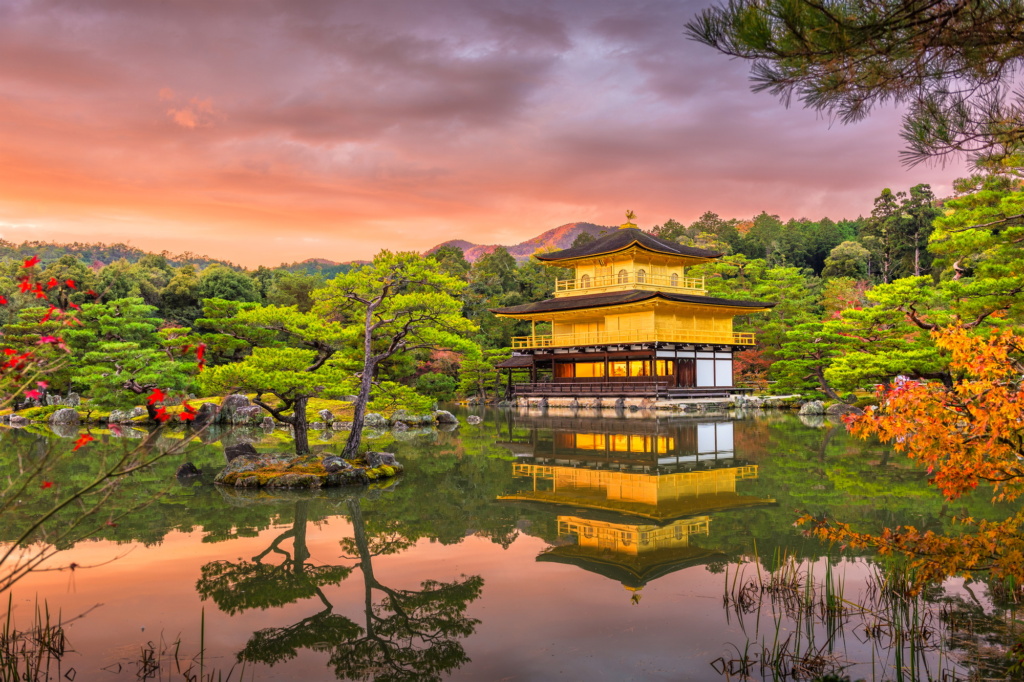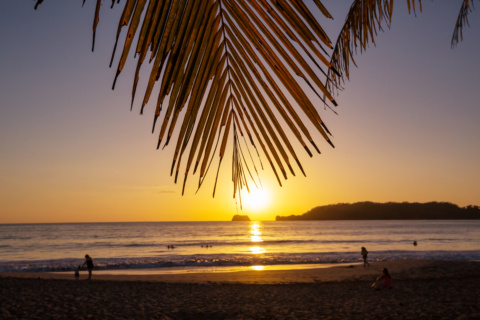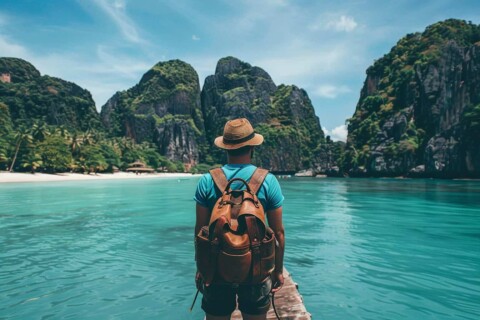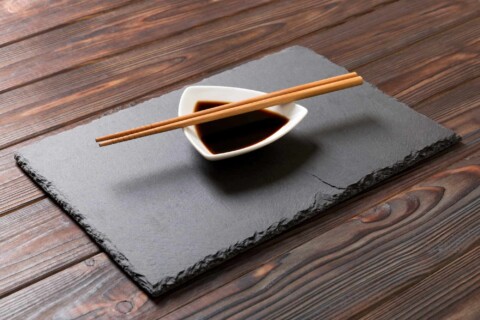There’s something almost magical about the moment you realize you’ve successfully navigated one of the world’s most complex train systems, ordered a meal using nothing but pointing and broken Japanese, and found your way through a bustling city where you can’t read a single sign. This moment of realization hits many solo travelers somewhere between their first successful subway transfer and their first confident restaurant order.
When people consider traveling alone in Japan, they often assume it must be intimidating. After all, Japan has a reputation for being incredibly different from Western culture, with complex social norms, an intricate writing system, and a language that shares little in common with English. But here’s what many discover during solo journeys through cities like Tokyo, Osaka, Kyoto, Kobe, Yokohama, and Hiroshima: Japan isn’t just one of the best countries for solo travel—it’s a masterclass in building unshakeable confidence.
The First Test: Tokyo’s Transit Maze
Landing in Tokyo as a solo traveler feels like being dropped into the middle of a beautiful, organized chaos. The city pulses with an energy that’s both exhilarating and overwhelming, and your first real test comes the moment you step off the plane and need to navigate your way into the city.
Staring at the subway map at Narita Airport, many travelers feel that familiar flutter of solo travel anxiety. The map looks like a rainbow spider web, with dozens of colored lines intersecting at hundreds of stations with names that seem impossible to pronounce. But here’s where Japan’s reputation for efficiency becomes your best friend. Within minutes of studying the English signage and following the clear pictorial instructions, most travelers find themselves confidently boarding trains toward their destinations.
That first successful navigation sets the tone for everything that follows. Each confident transfer between the JR Yamanote Line and the Tokyo Metro, each correct subway exit despite the maze of underground passages, builds a small victory. By the end of the first week in Tokyo, many solo travelers are navigating the system like locals, even helping other confused tourists find their way.
The confidence that comes from mastering Tokyo’s transit system extends far beyond just getting around. It’s the confidence of knowing you can figure things out, even when everything seems foreign and complex. It’s the realization that challenges that initially seem insurmountable are often just puzzles waiting to be solved.
Language Barriers: The Great Confidence Builder
One of the biggest pre-trip anxieties for many travelers is the language barrier. Most visitors arrive with vocabularies consisting of “arigatou gozaimasu,” “sumimasen,” and a handful of food words learned from years of sushi dinners. The worry about everything from ordering meals to asking for directions can feel overwhelming.
What solo travelers discover instead is that navigating Japan with minimal language skills becomes one of the most confidence-building aspects of the entire journey. The Japanese people encountered are incredibly patient and helpful, often going to extraordinary lengths to assist confused foreign travelers. In Osaka, it’s common for businesspeople to walk visitors several blocks out of their way to ensure they find destinations like Osaka Castle, despite complete inability to communicate beyond gestures and phone translation apps.
The food situation, which seems so daunting initially, becomes a daily adventure in confidence building. In Kyoto, travelers discover that many restaurants have plastic food displays in their windows—brilliant for pointing and ordering. In places that don’t, the adventure lies in embracing the unknown. Some of the best meals come from simply pointing at what other diners are eating and holding up fingers to indicate quantity.
In tiny family-run restaurants throughout Kobe, visitors often find themselves attempting to ask about the famous beef using combinations of hand gestures, phone translation apps, and enthusiastic pointing. The elderly restaurant owners typically respond with understanding and personally prepare incredible meals, often pressing small gifts like origami cranes into visitors’ hands—gestures that need no translation.
These daily interactions teach that communication goes far beyond shared language. Confidence comes from being willing to try, to make mistakes, to laugh at yourself, and to trust in the basic human desire to help one another.
Cultural Navigation: Respect and Self-Assurance
Japan’s reputation for complex social etiquette has many travelers second-guessing every interaction initially. Obsessing over bowing depths, worrying about chopstick placement, and feeling self-conscious about foreign presence in serene temples and quiet train cars is common.
But solo travel in Japan teaches the difference between respectful awareness and paralyzing self-consciousness. The key lies in observation and genuine respect rather than perfect execution. In Kyoto’s temples and gardens, watching how others move through the spaces—quietly, contemplatively, with reverence—provides the perfect guide. Learning to match their energy matters more than worrying about getting every detail right.
The confidence breakthrough often comes in places like Hiroshima, at the Peace Memorial Museum. Standing in that profound space, reading the stories and viewing the artifacts, many visitors realize that sincere respect and genuine interest in understanding Japanese culture and history matter more than perfect execution of cultural norms. The elderly Japanese visitors often seem to appreciate foreign presence and the effort to learn and pay respects, rather than judging cultural awkwardness.
This realization extends to every aspect of the journey. In the ryokans where solo travelers stay, staff warmly welcome foreign guests despite fumbling with yukata ties and confusion over bathing protocols, reinforcing that authenticity and respect trump perfection every time.
The Solo Diner’s Evolution
Nothing tests solo travel confidence quite like dining alone in a culture where communal eating is the norm. Initially, many travelers gravitate toward counter seating at ramen shops and avoid traditional restaurants entirely. The thought of sitting alone at a table meant for groups can feel mortifying.
But Japan has a beautiful culture of solo dining that visitors gradually discover and embrace. In Tokyo’s business districts, salary workers grab quick, solitary meals at standing soba counters. In Yokohama’s Chinatown, local office workers enjoy peaceful lunches alone, completely comfortable in their solitude.
The evolution as a confident solo diner often reaches its peak in Osaka—the nation’s kitchen. Walking into busy okonomiyaki restaurants during dinner rush and asking for tables for one typically results in warm welcomes rather than awkwardness. Chefs prepare meals right in front of solo diners, turning solitary dinners into interactive cooking lessons. Other diners often strike up conversations despite language barriers, and visitors frequently leave with new friends and stomachs full of incredible food.
By the time many travelers reach Hiroshima for farewell dinners of hiroshima-yaki, they’re choosing restaurants based purely on appeal rather than solo-friendliness. The learning comes that confidence in dining alone isn’t about finding perfect solo-friendly spots, but about carrying yourself with the assurance that you belong wherever you choose to eat.
Independent Exploration: Trust Your Instincts
Solo travel in Japan provides the freedom to follow curiosity wherever it leads, and this autonomy becomes a powerful confidence builder. Without having to consult travel companions or compromise on interests, travelers can dive deep into whatever captures their imagination.
In Tokyo, this might mean spending entire afternoons in the tiny alleys of Omoide Yokocho, chatting with bar owners and sampling yakitori at establishments no bigger than closets. In Kyoto, it could mean getting wonderfully lost in the bamboo groves of Arashiyama, following paths that don’t appear on any map simply because they look intriguing.
Some of the most confidence-building moments come from spontaneous decisions. In Kobe, deciding on a whim to hike up to Nunobiki Falls, despite having no detailed hiking plan, often results in spectacular views and incredible senses of accomplishment at reaching the falls completely independently.
The ability to change plans instantly becomes addictive. When travelers realize they’re more fascinated by Yokohama’s modern architecture than its historical sites, they can pivot immediately. When recommendations from fellow travelers send them chasing down specific vintage shops in Harajuku, they can dedicate entire afternoons to the hunt without disappointing anyone.
This flexibility teaches travelers to trust their instincts and interests, building deeper confidence in their own judgment and desires.
Overcoming the Unexpected
Solo travel inevitably presents challenges, and Japan is no exception. Technology failures, miscommunications, and unexpected closures test problem-solving abilities daily. Each successfully navigated obstacle builds another layer of confidence.
Challenging days might involve phones dying, backup battery packs failing, and being completely lost in districts like Kyoto’s Higashiyama with no map and no translation capability. Instead of panic, many experienced solo travelers feel a strange calm. After traveling solo in Japan for extended periods, trust in the ability to figure things out develops naturally.
Finding small cafés, using limited Japanese to explain situations, and receiving help from owners who not only charge phones but draw detailed maps to destinations transforms potential travel disasters into favorite memories—reminders that most problems have solutions, and people everywhere want to help.
These experiences teach that confidence isn’t about avoiding problems—it’s about trusting your ability to handle whatever comes your way.
The Transformation
By final weeks, traveling from cities like Hiroshima back to Tokyo for departures, many solo travelers realize how fundamentally the trip has changed them. The nervous travelers who studied subway maps for hours before leaving hotels evolve into people who hop on trains without checking schedules, strike up conversations despite language barriers, and navigate complex cities with the easy confidence of belonging anywhere.
The transformation isn’t just about Japan-specific skills. The confidence built navigating train systems translates to confidence in tackling complex challenges at home. The self-assurance developed dining alone extends to comfort in one’s own company in all situations. The problem-solving abilities honed when lost in places like Kyoto become tools applicable to any unexpected situation.
Practical Confidence Building
For anyone considering solo travel in Japan, here are key strategies for building and maintaining confidence:
Start Small: Begin with manageable challenges like navigating from hotels to nearby attractions before attempting cross-country train journeys.
Embrace Technology: Translation apps, transit apps, and offline maps are confidence multipliers. Don’t feel guilty about using every tool available.
Stay in Central Locations: Being within walking distance of major transit hubs reduces anxiety and increases willingness to explore.
Carry Cash: Japan is still largely a cash society, and having sufficient yen eliminates one major source of travel stress.
Learn Basic Etiquette: Understanding fundamental customs (bowing, shoe removal, quiet train behavior) builds confidence in social situations.
Trust Japanese Efficiency: Trains run on time, signs are accurate, and systems work exactly as advertised. Trust the infrastructure.
The Lasting Impact
Months after returning home, the confidence built navigating Japan alone continues to influence every aspect of travelers’ lives. Many approach new challenges with the same methodical calm used to decipher Tokyo’s subway system. Comfort with uncertainty increases, having learned that confusion is usually temporary and solutions are almost always available.
Most importantly, solo travelers learn that confidence isn’t something you either have or don’t have—it’s something you build through experience, one successful navigation at a time. Japan, with all its complexity and difference, provides the perfect training ground.
Solo travel in Japan teaches that the barriers we imagine are usually higher than the ones that actually exist. The language seems more impossible than it is, the culture more impenetrable, the logistics more complex. In reality, Japan reveals itself to be incredibly welcoming to solo travelers willing to approach it with respect, curiosity, and openness.
The confidence that comes from navigating Japan alone isn’t just about travel—it’s about life. It’s the deep knowledge that you can figure things out, adapt to new situations, and thrive anywhere you find yourself. It’s the understanding that independence doesn’t mean isolation, and that traveling alone can actually connect you more deeply with the world around you.
Building Your Japan Confidence
Japan offers unique opportunities for confidence building that extend far beyond the travel experience. The country’s combination of complexity and welcoming nature creates the perfect environment for personal growth. Every successfully navigated train transfer, every meal ordered through gestures and smiles, every temple visited with respectful curiosity builds layers of self-assurance that last long after the journey ends.
The cities you’ll encounter—from Tokyo’s organized chaos to Kyoto’s serene temples, from Osaka’s food culture to Hiroshima’s profound historical significance—each offer distinct challenges and rewards. Kobe’s blend of modern sophistication and traditional charm, Yokohama’s cosmopolitan atmosphere, all contribute to a comprehensive confidence-building experience.
The transformation from anxious traveler to confident navigator doesn’t happen overnight, but it does happen. Each day brings new small victories, new problems solved, new connections made despite language barriers. These accumulate into a fundamental shift in how you see yourself and your capabilities.
For those considering solo travel to Japan, the advice is simple: trust in the journey. The country that seems so foreign and challenging from a distance will teach you more about your own capabilities than you ever imagined possible. And the confidence you’ll build along the way? That’s a transformation that extends far beyond travel, influencing every aspect of how you approach life’s challenges and opportunities.








